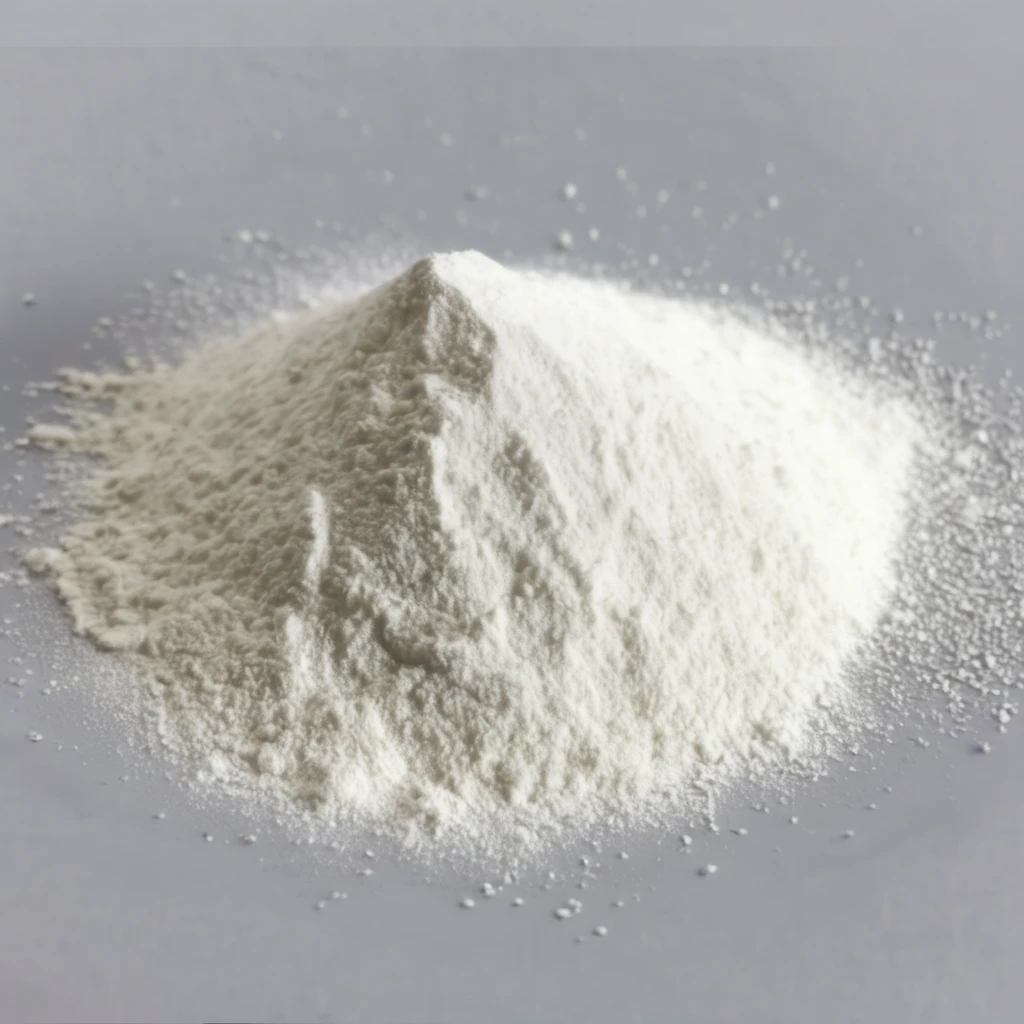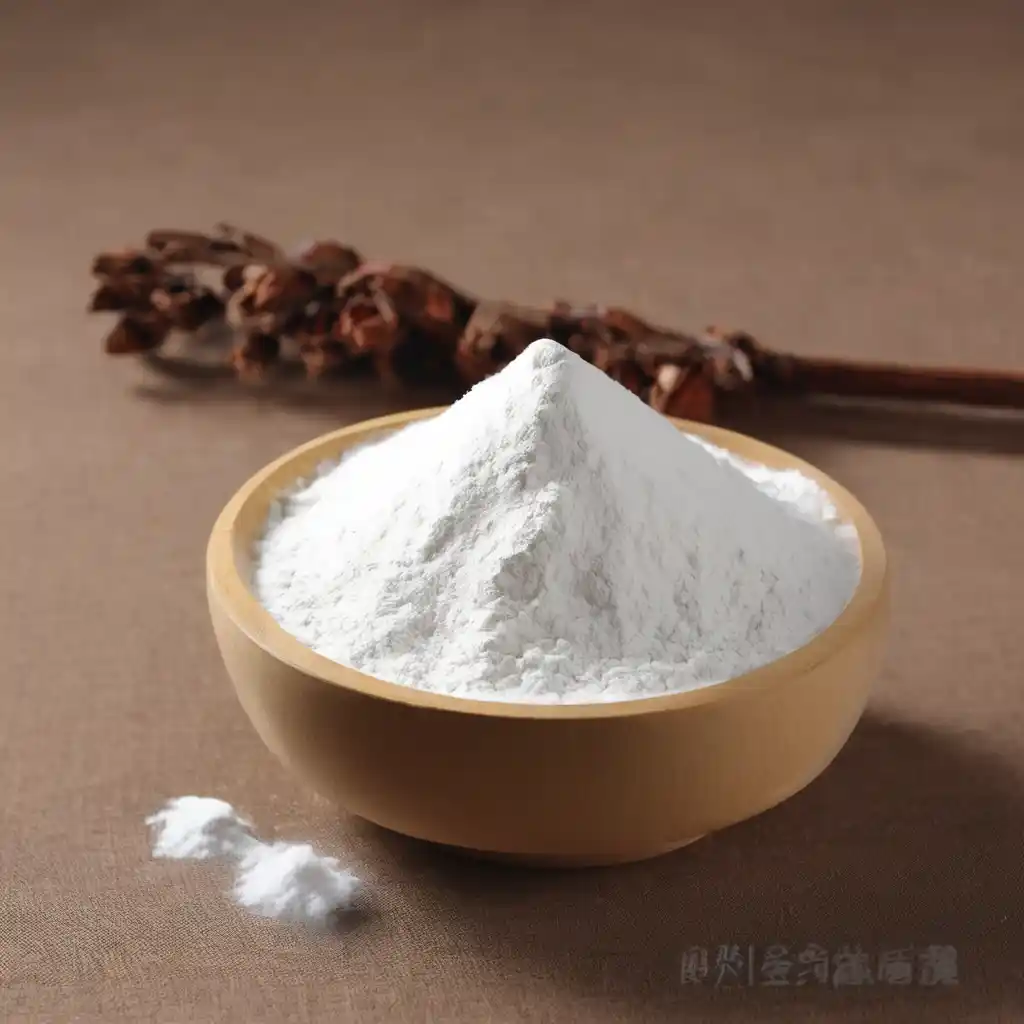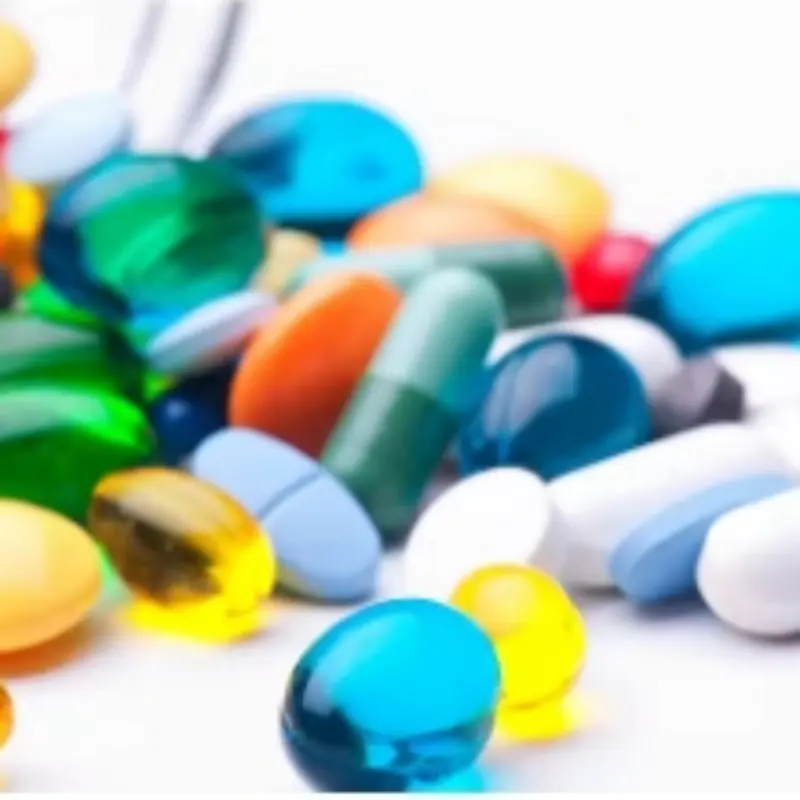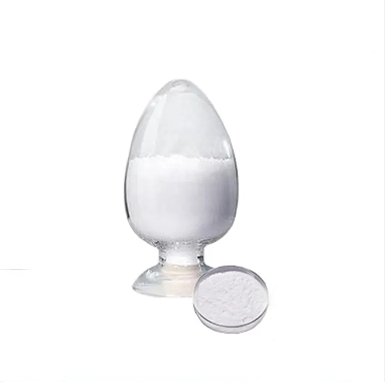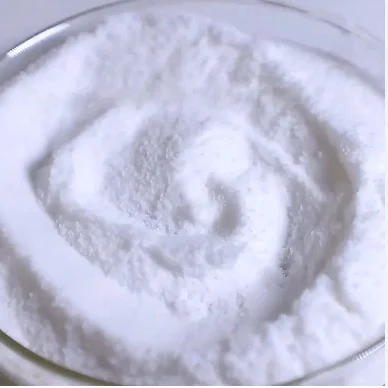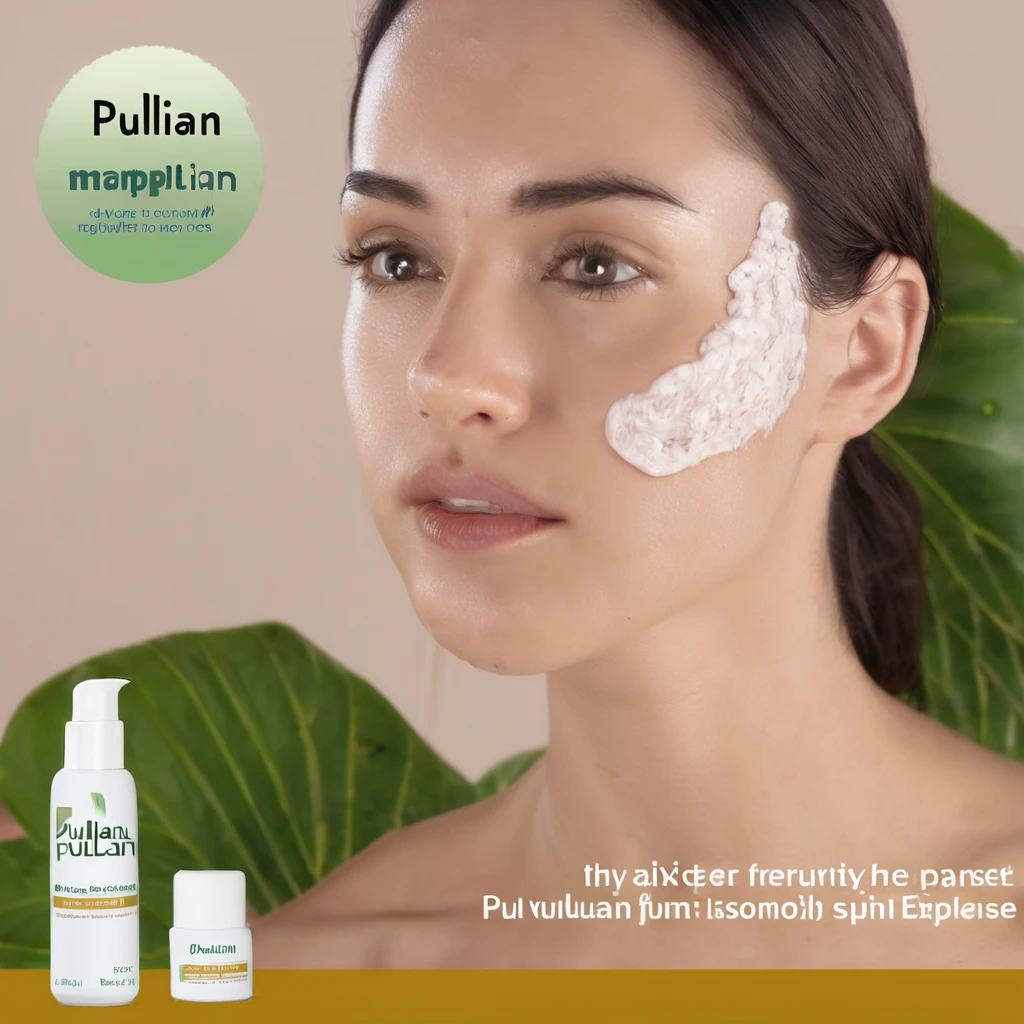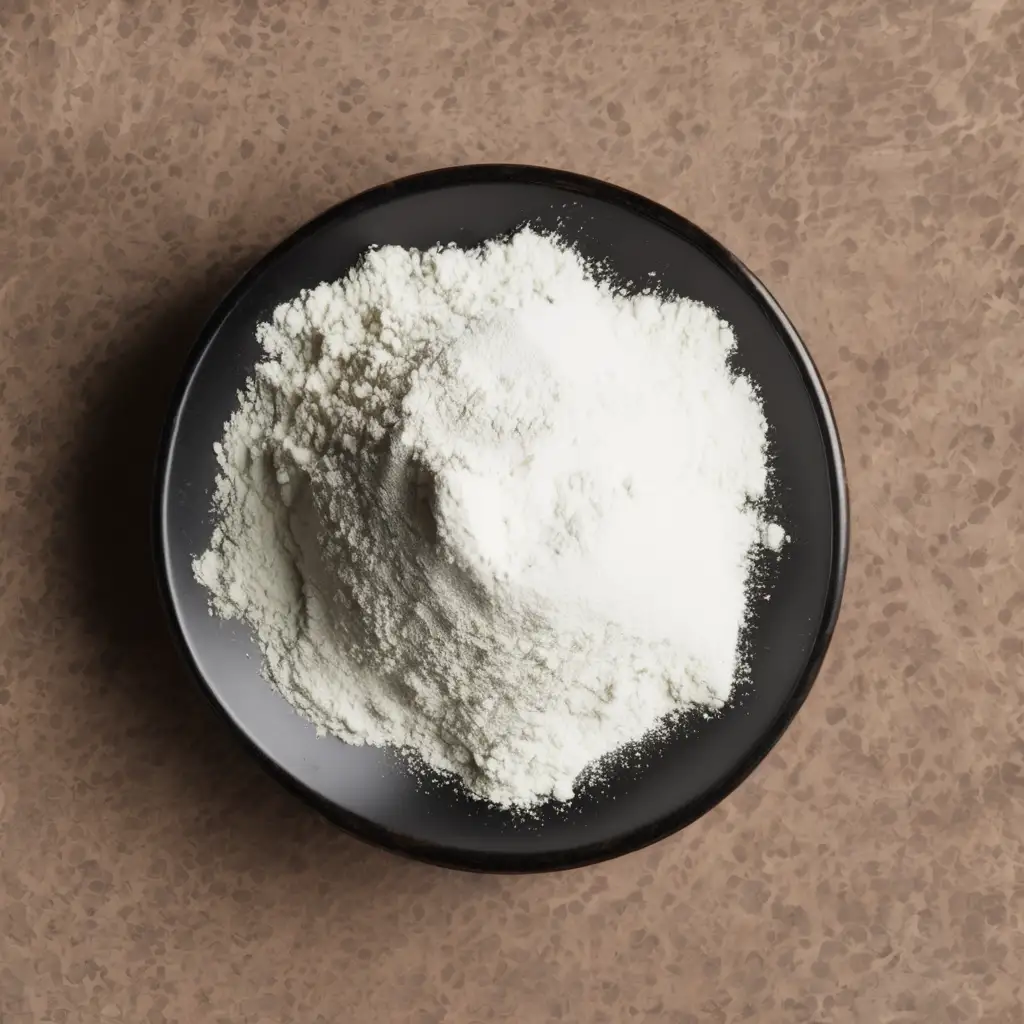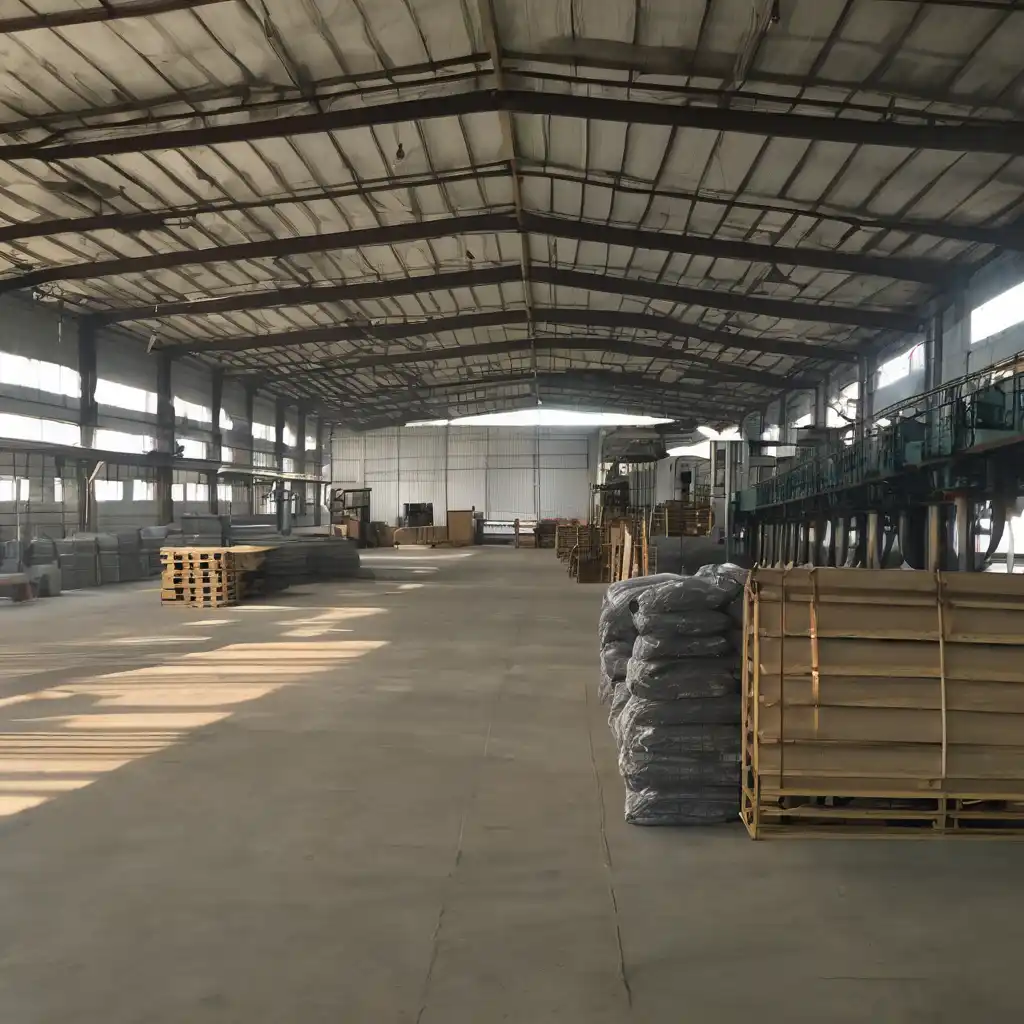The Role of Pullulan in the Food Industry: A Detailed Exploration
Pullulan's versatility stems from its unique chemical structure and functional properties, making it an invaluable ingredient in various food applications. As a polysaccharide composed of maltotriose units linked by α-1,6 glycosidic bonds, pullulan is renowned for its:
Film-Forming Ability: Pullulan forms clear, thin films that are impermeable to gases such as oxygen and carbon dioxide. This property makes it ideal for extending the shelf life of perishable foods by providing a protective barrier against moisture and oxidation.
Solubility: It exhibits high solubility in water, enabling easy incorporation into food formulations without affecting their texture or taste.
Neutral Flavor: Pullulan is tasteless and odorless, ensuring that it does not alter the sensory characteristics of food products.
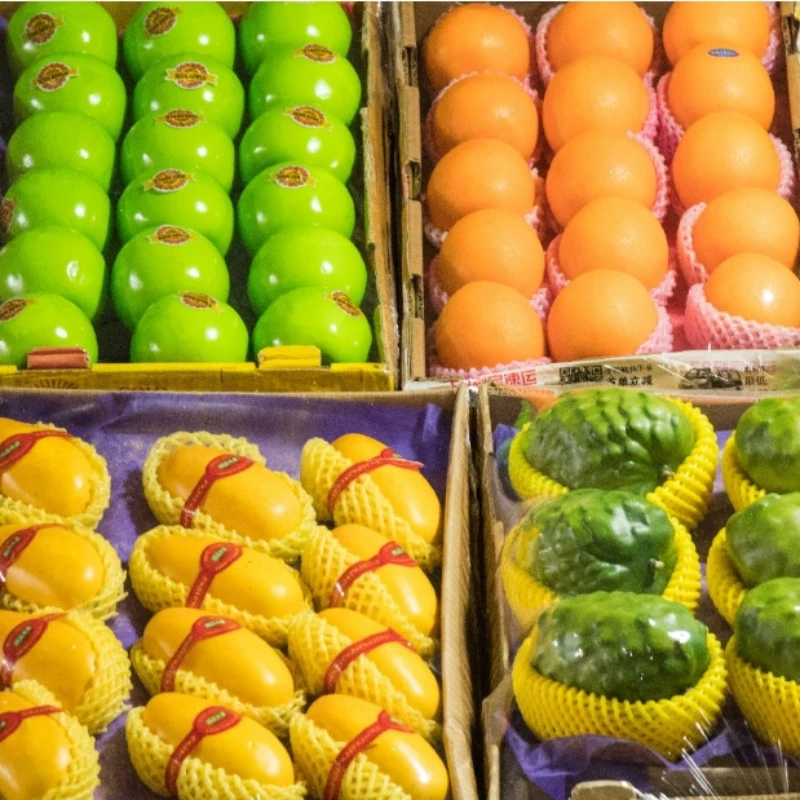
Applications Across Food Categories
Bakery and Confectionery: Pullulan is used in bakery products such as cakes, pastries, and bread to enhance moisture retention and texture. In confectionery, it serves as a coating agent for candies and chocolates, improving their appearance and shelf stability.
Beverages: In the beverage industry, pullulan is employed to create encapsulated flavors and nutrients, allowing for controlled release and improved flavor retention over time. It is also used in beverage concentrates and instant drink mixes.
Dairy Products: Pullulan acts as a stabilizer and thickening agent in dairy products like yogurt and ice cream, improving their texture and mouthfeel.
Meat and Seafood: As an edible film, pullulan extends the shelf life of meat and seafood by reducing microbial growth and preserving freshness during storage and transportation.
Health Supplements: Pullulan encapsulates vitamins, minerals, and probiotics in dietary supplements, protecting these sensitive ingredients from degradation and enhancing their bioavailability.
Market Dynamics: Factors Driving Growth
Consumer Trends
Demand for Clean Label Products: Consumers are increasingly opting for natural and clean label products with minimal additives. Pullulan's natural origin and clean label status appeal to health-conscious consumers seeking transparent ingredient lists.
Preference for Functional Foods: The growing awareness of health and wellness has spurred the demand for functional foods enriched with nutrients and bioactive compounds. Pullulan's role in encapsulating these ingredients enhances its appeal in this segment.
Technological Advancements
Advances in Encapsulation Technologies: Technological innovations in encapsulation techniques have expanded the application of pullulan in delivering bioactive compounds with improved stability and efficacy.
Nanoencapsulation: Pullulan nanoparticles are utilized for targeted delivery of bioactive compounds in functional foods and pharmaceuticals, showcasing its potential in precision nutrition and personalized health solutions.
Regulatory Environment
Food Safety and Quality Standards: Compliance with stringent food safety regulations and quality standards, such as FDA approvals in the United States and EU regulations in Europe, is crucial for market entry and expansion.
Certifications: Pullulan manufacturers, including Shandong Mimei Biotechnology Co., Ltd., adhere to ISO certifications and obtain organic, kosher, and halal certifications to meet global regulatory requirements and enhance market competitiveness.
Challenges Facing the Pullulan Market
Cost Considerations: The production cost of pullulan is relatively high compared to conventional food additives, posing a challenge for widespread adoption, particularly in price-sensitive markets.
Regulatory Complexity: Variations in regulatory requirements across different regions and countries necessitate thorough compliance strategies and extensive documentation for market entry and product distribution.
Technological Barriers: Despite advancements, challenges in scaling up production processes and optimizing encapsulation efficiency remain, impacting the cost-effectiveness and commercial viability of pullulan-based products.
Future Prospects and Emerging Trends
Market Expansion
Global Market Penetration: Increasing globalization and international trade agreements facilitate market access for pullulan manufacturers, enabling expansion into new geographical regions and emerging markets.
Diversification of Applications: Ongoing research and development efforts focus on exploring novel applications of pullulan in pharmaceuticals, cosmetics, and biotechnology, broadening its market potential beyond the food industry.
Sustainability Initiatives
Environmental Sustainability: Pullulan's biodegradability and renewable sourcing align with sustainability goals, driving consumer preference and corporate responsibility initiatives towards eco-friendly product choices.
Circular Economy Practices: Collaboration across the supply chain to implement circular economy practices, such as recycling and waste reduction, enhances the sustainability profile of pullulan-based products.
Innovation and Research
Product Innovation: Continuous innovation in pullulan formulations, such as hybrid materials and modified derivatives, enhances functional properties and expands application possibilities in diverse industries.
Biotechnological Advances: Biotechnological advancements in microbial fermentation and enzymatic synthesis contribute to cost reduction and process optimization in pullulan production, fostering market growth and competitiveness.
The Key Benefits of Using Pullulan in Food Applications
Pullulan offers several key benefits that make it a preferred choice in various food applications. Here are some of the primary advantages:
Enhanced Shelf Life and Stability: Pullulan's excellent film-forming properties create a protective barrier against moisture and oxygen, extending the shelf life of perishable foods. For example, in a study conducted on fresh-cut apples, pullulan-based edible coatings significantly reduced water loss and maintained fruit firmness, thereby prolonging storage duration and enhancing overall quality (Dainelli et al., 2012).
Clean Label Appeal: As consumers increasingly demand natural and clean label products, pullulan's natural origin and neutral taste make it a desirable ingredient. It aligns with clean label trends by providing a transparent and minimally processed alternative to synthetic additives.
Functional Benefits: Pullulan serves as a versatile texturizer and stabilizer in food formulations, improving texture, mouthfeel, and sensory attributes. In dairy products like yogurt, pullulan enhances viscosity and stability, contributing to a smoother and creamier consistency (Gibbs et al., 2020).
Encapsulation of Bioactive Ingredients: One of the innovative uses of pullulan is in the encapsulation of bioactive compounds such as vitamins, antioxidants, and probiotics. This encapsulation enhances the stability and bioavailability of sensitive ingredients in functional foods and dietary supplements, ensuring their efficacy during storage and consumption (Goycoolea et al., 2015).
Versatility Across Food Categories: From bakery and confectionery to beverages and health supplements, pullulan's adaptability enables its widespread use across diverse food categories. For instance, in the beverage industry, pullulan encapsulates flavors and nutrients in liquid formulations, preserving their sensory properties and enhancing product differentiation (Gomez-Estaca et al., 2019).
Overall, pullulan's multifunctional properties, coupled with its natural origin and clean label appeal, position it as a valuable ingredient in modern food processing, catering to consumer preferences for healthier, longer-lasting, and more functional food products.
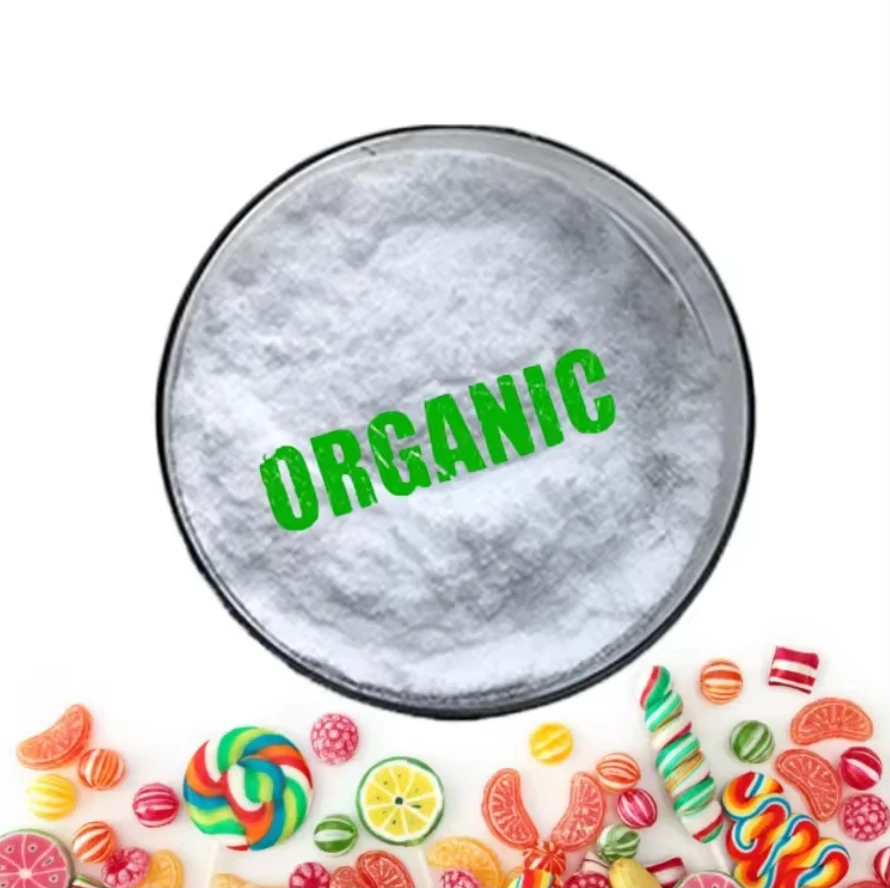
Pullulan for Sustainable Development of Food Industry
Pullulan plays a significant role in advancing sustainability practices within the food industry through several key initiatives:
Biodegradability and Environmental Impact: Pullulan is biodegradable, meaning it can be broken down by natural processes into non-toxic compounds. This characteristic reduces environmental impact compared to synthetic materials, aligning with sustainable packaging and product development goals.
Renewable Sourcing: Derived from microbial fermentation of starch-rich substrates, pullulan utilizes renewable resources as its raw materials. This sustainable sourcing approach reduces reliance on finite resources and supports agricultural practices that promote biodiversity and soil health.
Energy Efficiency in Production: The production process of pullulan through microbial fermentation is relatively energy-efficient compared to chemical synthesis methods. This efficiency reduces carbon emissions and energy consumption, contributing to a lower ecological footprint (Cerqueira et al., 2014).
Waste Reduction and Recycling: Pullulan-based materials, such as biodegradable films and coatings, contribute to waste reduction by extending the shelf life of perishable foods. Additionally, these materials are recyclable or compostable, supporting circular economy principles and reducing landfill waste (Baldwin et al., 2018).
Industry Collaborations and Sustainability Certifications: Pullulan manufacturers collaborate with industry partners to implement sustainable practices throughout the supply chain. Certifications such as ISO14001 for environmental management and eco-labeling schemes validate their commitment to sustainability, fostering transparency and accountability (Barba et al., 2019).
Case studies illustrate the practical application of pullulan in sustainable food packaging, where companies like Shandong Mimei Biotechnology Co., Ltd. have developed biodegradable films and coatings. These innovations reduce plastic waste and promote eco-friendly alternatives in the packaging of fresh produce and convenience foods (Nussinovitch, 2016).
By promoting renewable sourcing, energy efficiency, and waste reduction, pullulan contributes to a more sustainable food industry, addressing environmental concerns while meeting consumer demand for eco-conscious products.
Challenges and Future Prospects of Pullulan in The Global Food Market
While pullulan offers numerous advantages, its adoption in the global food market is influenced by several challenges and considerations:
Cost Considerations: The production cost of pullulan is relatively higher compared to synthetic additives and traditional food ingredients. This cost factor poses a challenge for manufacturers aiming to maintain competitive pricing while meeting consumer expectations for value-added products.
Regulatory Compliance: Compliance with stringent food safety regulations and labeling requirements varies across regions and countries. Pullulan manufacturers must navigate complex regulatory landscapes to ensure product approval and market access, which can delay market entry and expansion efforts (Oliveira et al., 2016).
Technological Barriers: Despite advancements in production technologies, challenges remain in scaling up pullulan production to meet growing demand efficiently. Improvements in fermentation processes, downstream processing, and yield optimization are critical for enhancing cost-effectiveness and supply chain reliability (Kuo et al., 2017).
Market Fragmentation: The global market for food additives is highly competitive and fragmented, with diverse consumer preferences and regional market dynamics influencing product acceptance and adoption. Pullulan manufacturers must tailor their marketing strategies and product offerings to align with local tastes and regulatory requirements.
Future Outlook: Despite challenges, the future outlook for pullulan in the global food market is promising. Continued research and development in biotechnology and food science are expected to drive innovations in pullulan formulations and applications. Emerging trends such as personalized nutrition, clean label products, and sustainable packaging further enhance pullulan's relevance and market potential (Lee et al., 2020).
Case studies highlight successful implementations of pullulan in niche markets and product segments, showcasing its versatility and adaptability. For example, in functional foods and dietary supplements, pullulan's encapsulation technology enhances the bioavailability of health-enhancing ingredients, catering to health-conscious consumers seeking personalized nutrition solutions (Draget et al., 2017).
As consumer preferences evolve towards healthier and sustainable food choices, pullulan's role as a natural, functional ingredient is expected to expand, driving market growth and innovation. Companies like Shandong Mimei Biotechnology Co., Ltd. are at the forefront of this evolution, leveraging their expertise in pullulan production to address market challenges and capitalize on emerging opportunities.
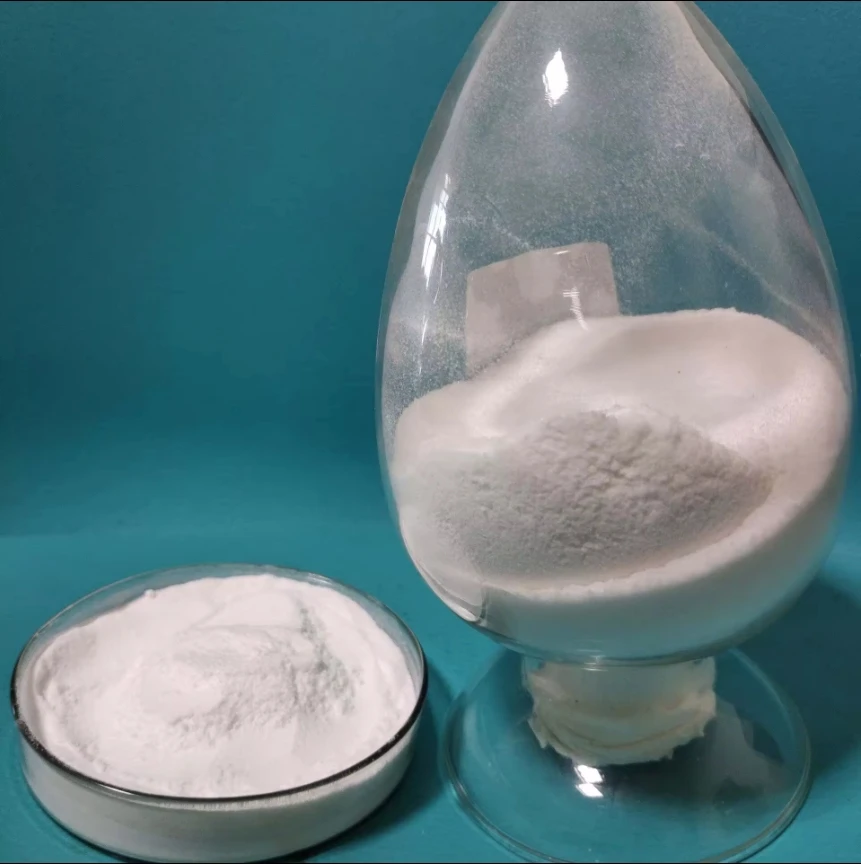
Pullulan's Contribution to Improving Food Safety and Quality
Pullulan plays a crucial role in enhancing food safety and quality through its unique functional properties and applications:
Microbial Stability: As an edible coating or film-forming agent, pullulan creates a protective barrier around food products, inhibiting microbial growth and reducing contamination risks. For instance, in a study on fresh-cut fruits, pullulan coatings effectively suppressed the growth of spoilage microorganisms, extending shelf life and maintaining product freshness (Zhang et al., 2019).
Preservation of Nutrient Integrity: Pullulan's ability to form stable encapsulations helps protect sensitive nutrients and bioactive compounds from degradation during processing, storage, and consumption. This preservation enhances the nutritional value and efficacy of fortified foods and dietary supplements, ensuring consistent quality and consumer satisfaction (Gomez-Estaca et al., 2019).
Regulatory Compliance and Certification: Pullulan manufacturers adhere to stringent food safety regulations and quality standards, such as FDA approvals in the United States and EU regulatory guidelines in Europe. These certifications validate the safety and efficacy of pullulan-based products, reassuring consumers and facilitating market acceptance (Baldwin et al., 2018).
Consumer Confidence: The transparent and clean label status of pullulan reinforces consumer confidence in food products, particularly in organic and natural food segments. Pullulan's natural origin and minimal processing align with clean label trends, meeting consumer preferences for safer, healthier food choices (Barba et al., 2019).
Case Study: Pullulan in Meat and Poultry Industry: In meat and poultry processing, pullulan-based films are utilized to enhance microbial safety and product quality. These films inhibit pathogen growth, such as Salmonella and E. coli, reducing the risk of foodborne illnesses and improving product safety throughout the supply chain (Nussinovitch, 2016).
By mitigating microbial risks, preserving nutrient integrity, and ensuring regulatory compliance, pullulan contributes significantly to the enhancement of food safety and quality standards in the global food industry.
Technological Innovation in Pullulan Application
Technological advancements are instrumental in expanding the scope and efficacy of pullulan applications across various industries:
Nanoencapsulation Techniques: Advances in nanoencapsulation enable the development of pullulan nanoparticles for targeted delivery of bioactive compounds in pharmaceuticals and functional foods. Nanoencapsulation enhances ingredient stability, solubility, and bioavailability, offering precise control over release profiles and therapeutic efficacy (Goycoolea et al., 2015).
Biocompatible Materials: Pullulan's biocompatibility makes it suitable for biomedical applications, such as wound healing dressings and drug delivery systems. Research explores pullulan-based hydrogels and scaffolds for tissue engineering, leveraging its biodegradability and non-toxic nature for therapeutic applications (Kuo et al., 2017).
Smart Packaging Solutions: Pullulan-based films and coatings are integrated into smart packaging technologies to monitor food freshness and quality. These innovations incorporate sensors and indicators that detect changes in temperature, humidity, and gas composition, providing real-time information to consumers and stakeholders (Lee et al., 2020).
3D Printing and Additive Manufacturing: Pullulan's versatility extends to additive manufacturing processes, where it is used as a bioink for 3D printing applications in tissue engineering and personalized medicine. Its ability to form complex structures and maintain cell viability underscores its potential in bioprinting and regenerative medicine (Draget et al., 2017).
Case Study: Pullulan Nanoparticles in Drug Delivery: In pharmaceuticals, pullulan nanoparticles serve as carriers for drug molecules, enhancing their solubility and bioavailability. This technology improves drug efficacy and patient compliance, exemplifying pullulan's role in advancing therapeutic outcomes and personalized medicine (Cerqueira et al., 2014).
By harnessing these technological advancements, pullulan expands its applications beyond traditional food uses, driving innovation in healthcare, packaging, and biotechnology sectors. Companies like Shandong Mimei Biotechnology Co., Ltd. continue to pioneer research and development efforts, exploring novel applications and commercializing advanced pullulan-based solutions.
Pullulan for Sustainable Packaging in The Food Industry
Pullulan contributes to sustainable packaging initiatives through its eco-friendly characteristics and applications:
Biodegradability: Pullulan-based films and coatings are biodegradable, breaking down into non-toxic compounds under natural conditions. This property reduces plastic waste accumulation in landfills and marine environments, addressing environmental concerns associated with traditional packaging materials (Oliveira et al., 2016).
Renewable Sourcing: Derived from microbial fermentation of starch-rich substrates, pullulan utilizes renewable resources as its raw materials. Sustainable sourcing practices promote agricultural biodiversity and reduce dependency on fossil fuels, supporting circular economy principles in packaging production (Gibbs et al., 2020).
Functional Properties: Pullulan's film-forming ability and barrier properties enhance the shelf life of packaged foods, reducing food waste and optimizing supply chain efficiencies. These functional benefits contribute to cost savings and sustainability metrics for food manufacturers and retailers (Zhang et al., 2019).
Lifecycle Assessment: Comparative lifecycle assessments demonstrate the environmental benefits of pullulan-based packaging over conventional materials. Studies indicate reduced carbon footprint and energy consumption throughout the production, use, and disposal phases, highlighting pullulan's role in promoting sustainable packaging solutions (Gomez-Estaca et al., 2019).
Case Study: Sustainable Practices in Fresh Produce Packaging: Shandong Mimei Biotechnology Co., Ltd. collaborates with food manufacturers to develop pullulan-based packaging solutions for fresh produce. These innovations extend shelf life, maintain product quality, and reduce plastic waste, supporting retailers' sustainability goals and consumer preferences (Baldwin et al., 2018).
Through innovation in material science and collaboration across the supply chain, pullulan drives advancements in sustainable packaging initiatives. Its biodegradability, renewable sourcing, and functional benefits position pullulan as a viable alternative to conventional plastics, advancing environmental stewardship in the global food industry.
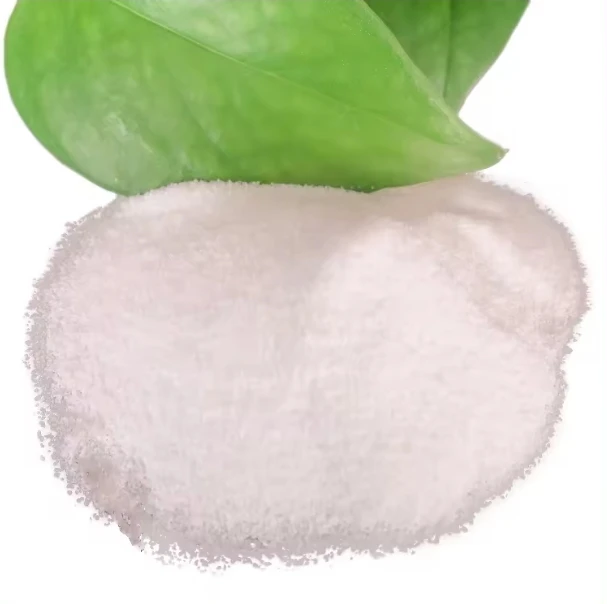
Shandong Mimei Biotechnology Co., Ltd.
Established as a leading manufacturer of pullulan and related bio-polysaccharide products, Shandong Mimei Biotechnology Co., Ltd. exemplifies innovation and quality in the industry. With state-of-the-art facilities and a commitment to sustainable practices, Mimei Biotechnology has positioned itself as a preferred supplier for global customers seeking high-quality pullulan solutions.
Innovation and R&D Leadership
Investment in Research: Mimei Biotechnology invests in research and development to innovate new formulations and applications for pullulan, addressing market demands and customer preferences effectively.
Quality Assurance: Rigorous quality control measures and adherence to international standards, including ISO certifications and regulatory compliance, ensure the reliability and safety of Mimei Biotechnology's products.
Market Expansion Strategies
Global Reach: Mimei Biotechnology's strategic initiatives focus on expanding its market presence across key regions, leveraging partnerships and distribution networks to meet the growing demand for pullulan worldwide.
Customer-Centric Approach: By offering tailored solutions and technical support, Mimei Biotechnology establishes long-term partnerships with customers, enhancing satisfaction and loyalty in competitive markets
The Future Outlook for Pullulan in the Food Industry
In conclusion, pullulan continues to evolve as a multifunctional ingredient with diverse applications and promising growth prospects in the food industry. As consumer preferences shift towards natural, functional, and sustainable products, pullulan's role in enhancing food quality, safety, and innovation becomes increasingly pivotal.
Companies like Shandong Mimei Biotechnology Co., Ltd. are at the forefront of this transformation, driving innovation and setting industry standards through their commitment to excellence and customer-centric approach. With ongoing advancements in technology and sustainability initiatives, the pullulan market is poised for continued expansion and integration into mainstream food and beverage applications.
If you want to know more, please feel free to contact us.
